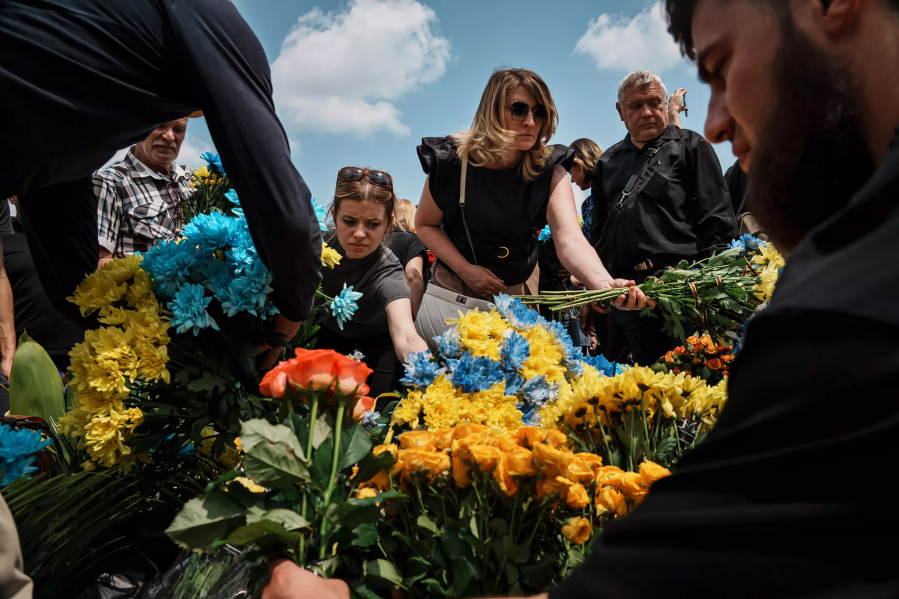LVIV, Ukraine — One day, there might be two. Then, perhaps — an increasing rarity — a day with none. And then, as on this hot, cloud-shrouded day, four.
Four caskets to be carried by pallbearers along a cobblestone street lined with silent mourners. Four names intoned in the echoing, dimly lighted recesses of a landmark church. Four fresh graves hewn from claylike soil in a historic cemetery where the newly dead are crowding out the old.
Ukraine’s ongoing counteroffensive against invading Russian troops, a bloody, slow-motion struggle that is exacting a heavy but undisclosed toll from both armies, began with little fanfare in early June. No one expects the fighting to end any time soon.
In cities, towns and villages across Ukraine, bleak homecomings for the dead are a ritual as old as war. The grief they inspire is like something alive, a wild and complex organism that confounds even those who know it well.



